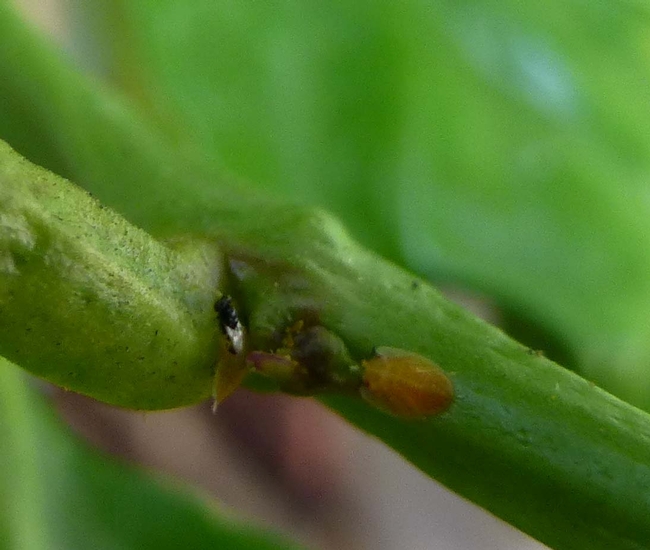Natural enemy of Asian citrus psyllid taking hold
Mark Hoddle, UC Cooperative Extension specialist in the Department of Entomology at UC Riverside, collected Tamarixia radiata in the Punjab region of Paskistan. After a period of quarantine, the beneficial insect was released in Southern California citrus trees beginning in December 2011.
The Press-Enterprise article said Hoddle has found three sites — two in Fontana, one in San Bernardino — where the wasp has attacked psyllid larvae, killing them.
“We’re trying to understand how big an impact this wasp is having on the Asian citrus psyllid,” Hoddle said. “It’s too early to make estimates, but (the finds are) encouraging.”
For more details on the establishment of Tamarixia, see the UC Riverside Center for Invasive Species Research blog.
Olive oil's heath benefits? It's a slippery question
Katherine Tallmadge, The Washington Post
Polyphenols are what make olive oil more healthful than other vegetable oils, like canola oil. However, when tested, polyphenols were surprisingly low in most commercially available olive oils, USDA-ARS researchers reported. They also don't live up to international or USDA quality standards, according to studies by the UC Davis Olive Center.
Studies show that, as days, weeks and months go by after harvest, the polyphenol content and health benefits of the oil diminish.
“Think of olive oil as olive juice with a maximum two-year shelf life,” says Selina Wang, research director at the Olive Center.
Covenant between almond growers and researchers
Bob Curtis and Gabriele Ludwig, The Almond Board, Western Farm Press
If managed well, commercial trials can provide benefits for growers, researchers and the industry at large, but they can pose challenges. Almond research plots are a covenant between the grower and researcher that requires both parties to communicate and understand the goal of the research.
Bruce Lampinen, UC Cooperative Extension specialist in the Department of Plant Sciences at UC Davis, says involving grower cooperators offers the research community the benefit of gathering commercial data to test promising practices or understand impacts in a real-world setting. Without this research, many of today's common practices that have led to dramatic increases in yield and improved quality, along with efficient and environmentally responsible orchard management, would not have been discovered.

